- Home
- Peter Ackroyd
Thames Page 9
Thames Read online
Page 9
The Sacred River
Lechlade. The spire can be seen by the Thames traveller for miles
CHAPTER 11
Holy River
A Thames villager of the 1770s left a confession of murder, after his own death, in which he claimed that “the purifying waters” of the river at Buscot “must slake me of my crime.” In one of the Vedic Puranas it is declared that “all the rivers are sacred, all flow towards the sea; all are like mothers to the world, all purge away sin.” The Thames itself has always been considered holy, an aspect of the peace that passes all understanding.
From the earliest stages of human life rivers themselves have been deemed to be sacred. The ancient Persians considered it blasphemous to pollute them. The Ganges has been treated as a god. Hindus have seen in the icicles of the Himalayan cavern, where the Ganges rises, the flowing hair of the god Shiva. The Abyssinians worshipped the Nile as a divinity. The Egyptians venerated the annual rise of the Nile with burnt offerings, sacrifices and rituals of fire; they saw the river in the form of the god Hapi. The twin rivers of Mesopotamia, the Tigris and the Euphrates, were venerated as the home of dragons; it was a recognition of the fact that the waters could be destructive as well as fruitful. In the cultures of Mesopotamia and the Nile Valley magicians and soothsayers would practise their arts by the rivers. In the Aboriginal cultures of Australasia the “dreamtime tracks” of the ceremonies followed the courses of the rivers. In “The Visions of Zosimos” (1937), Jung declares that “water and spirit are often identical.”
The Thessalians worshipped the Peneus river on account of its beauty, the Scythians revered the Danube for its magnitude, the Aetolians venerated the Achelous for its ancientness. It is conjectured that in England the Druids worshipped the rivers that flowed from west to east, one of which is of course the Thames itself. That is why the sixth-century historian of England, Gildas, spoke of the local rivers as “an abomination and destruction to men, and to which the blind people paid divine honour.” The later chronicler, Geoffrey of Monmouth, also placed the Thames in the context of sacred events—it was to the river that Brutus, grandson of Aeneas, came to found Troia Nova. An altar dedicated to Jupiter Optimus was found on the banks of the Thames at Little Wittenham, and the ritual carving of a goddess was excavated by Bablock Hythe. Close by the remains of Reading Abbey lies Hallowed Brook.
The spiritual presence of the river has been attested in a number of different ways. Christ has been pictured by the nineteenth-century poet Francis Thompson, in his “In No Strange Land,” walking upon the waters “not of Gennesareth, but Thames!” A similar image was employed by the twentieth-century painter, Stanley Spencer, who saw in the river intimations of the Scriptures. In particular he portrayed Christ preaching from a boat moored by the river-bank. This was beside his local village of Cookham, in which place his images are bathed in the light of eternity. In Salve Deux, Rex Judaeorum Emilia Lanier, a poet of the sixteenth century, addressed “sweet Cookham, where I first obtained Grace from that Grace where perfect Grace remained.” It was for her “the Paradice of Cookham.” This has been one of the blessed places of the earth. In 1966 a Polish émigré, Alexander Wozniak, proposed to walk on the Thames from Cricklade to London in order to celebrate one thousand years of Christianity in his native country; for this venture he constructed “skinoes,” a hybrid of water-skis and canoes, with which he reached Westminster Pier seven days later.
One of the great celebrators of the river, Kenneth Grahame, for a moment abandoned the childlike animal life of the Thames in The Wind in the Willows in order to evoke the holiness of the river’s presence. In a chapter entitled “The Piper at the Gates of Dawn,” he describes how Mole and Rat approach an island in the middle of the river with “solemn expectation.” When they land upon this eyot, Rat whispers: “This is the place of my song-dream, the place the music played to me. Here, in this holy place, here if anywhere, surely we shall find Him.” He is the ancient deity of the river, the pagan divinity who is part Pan and part Shiva and part Hapi, the quintessential river-god to whom “the two animals, crouching to the earth, bowed their heads and did worship.”
Yet there are some who would claim that these gods, and goddesses, are expressions of the natural divinity of water. The river represents the concept of divine intervention in Nature; it is a token of the perfectibility and redemption of the world. It is the oldest of all nature’s forces. The holy waters support life and promote fertility as well as destruction. They represent the mystery, as well as the benevolence, of the natural world. In the forty-sixth psalm it is revealed that “there is a river, the streams whereof shall make glad the city of God, the holy place of the tabernacles of the Most High.”
Thus the deity of the river adopts a fluid shape. He is Proteus as well as Pan. There are four gilded statues of the Buddha overlooking the river from their prominence in Battersea Park. In 2004 a Hindu shrine was found beside the Thames near Chelsea Bridge, complete with candles and cymbals of brass. Both Sikhs and Hindus are now pursuing a campaign for legislation that would allow them to scatter the ashes of their dead into the river. On the first morning of the Jewish new year a company of Jews used to meet on a quay by the north bank of the Thames, against the Custom House, and offer up prayers in remembrance of their captivity. The ancient river can be seen as an ancestral home for the faiths of all. It is not too fanciful to notice the pulpits built into Blackfriars Bridge; they have been placed there deliberately to remind passers-by of the monastic traditions of the river at this point.
The Knights Templar settled by the Thames; all physical trace of them has now disappeared, but they have left behind the tokens of their presence in the names of Temple Lock, Temple House, Temple Combe and Temple Mills along the river. The original crossing at Marlow, where a bridge now stands, can be attributed to the Knights Templar of Bisham. In Iain Sinclair’s fantasy of the Thames, Downriver (1991), he compares the fortifications of the Thames Barrier to “helmeted Templars, flashing with signals, arrows, red crosses—warnings.” Not for the first time has he intuited the ancient denizens of the river.
Pilgrims crossed the Thames as part of their journey towards salvation or, at least, towards the remission of sin. There was a pilgrim pathway, from Waltham Cross to Canterbury, that traversed the uninhabited marshes of the Isle of Dogs; there was a pilgrim chapel, too, by the river where the devout could pray for a successful crossing. It is shown on an early eighteenth-century map, with nothing beside it but a few windmills. There was another ancient causeway near the parish of Higham, in the estuary, from which the pilgrims of Essex could make their way to Becket’s shrine. Other river-crossings for the pilgrims of medieval England are marked by the number of badges or tokens that have been found in deposits along the foreshore.
There is a church on the river-bank at St. Clement’s Reach, near West Thurrock, which is still called the Pilgrim Church. It retains a reputation, albeit of a more secular nature. It is one of the churches used in the successful film, Four Weddings and a Funeral. The film is apposite in another sense, since river churches have always been a favourite venue for weddings. In the spring and summer months there is a plethora of such ceremonies, with a clear connection to the fertility magic associated with the Thames. It is the custom for the newly married couple to cross the bridge, if one exists, and to be photographed on the bank opposite the church. It is an emblem of crossing between worlds, one of the many rites of passage with which the river is identified.
To be baptised in the river is also to be reborn, to have crossed the threshold into a new life. On the humpbacked stone bridge at Radcot, the oldest on the Thames, there are the remains of a stone font that was employed for the baptismal rite. There is in Cricklade a traditional place beside a small plank bridge, known as Hatchetts Ford or more prosaically Plank Bridge, where full immersion baptisms were still taking place at the beginning of the twentieth century. An extant photograph shows a woman in white being escorted into the middle of the river, whi
le more than a hundred people are congregated upon the bank to watch the ceremony. It was one of the most ancient rituals of the Thames. There were baptisms by the Isle of Sheppey, close to the seventh-century abbey established by Queen Sexburga. In more recent centuries the villages of the Upper Thames have been well known for their strong Baptist congregations, as if some atavistic memory determined their faith. The Baptist chapel at Cote, near Shifford, may be the oldest Protestant foundation in the country since it is associated with Wycliff and his “poore preachers” of the fourteenth century. The Anabaptists met for worship in a house by the river, at Reading, where they were joined by John Bunyan. There are at least three churches dedicated to St. John the Baptist along the course of the river. And there is a painting by Stanley Spencer, The Baptism, which shows Christ being baptised by the waters of the Thames.
Hermits have found sanctuary beside the river. There was a medieval hermitage, known as the Swan’s Nest, in the riverside area of Wapping; it was inhabited by John Ingram from 1371 to 1380, and by other hermits at a later date. There was a recluse, known as Annora, who lived immured in a cell beside the riverside church of St. Mary in Iffley. There was within living memory a hermit in the woods by the river at Hambleden, known only as “Judgement Jack.” The river offers seclusion, and the stilling of human voices.
Nymphs have always been part of the life of the Thames. There are still memorials of them everywhere. By an old riverside path in Twickenham, just past Eel Pie Island, there are stone images of seven nymphs lying upon some rocks. In the pediment of Somerset House by the river reclines a nymph, brandishing a trident. In his paean to the Thames in Windsor Forest (1713) Alexander Pope declares to the river that
Nor all his stars a brighter lustre show,
Than the fair nymphs that gild thy shore below.
The nymph was popularly believed to be a healer and a guide to travellers, a caretaker of youth and a source of knowledge. She embodied the natural magic of the river. Of all the local deities, the nymph was the one most revered. In the classical world, for example, almost every spring or fountain had a small altar or shrine. The nymphs were powerful and benevolent spirits, able to diffuse wealth and fertility over the riverine regions that they occupied.
In the sixteenth century John Dickenson, in Arisbas, Euphues amidst his slumbers (1594), celebrated “lovely Thamesis, fairest of fair Nereides…the faire Nymphs keeping tyme with the billowing of her Chrystall waves, carrying to the Ocean with her ebbe.” When Elizabeth I or James I went on royal progress through the riparian counties, the sovereign was generally presented with a masque of the nymph “of the place.” It was a way of expressing the particular quality and nature of the area, haunted by water and by springs. It was also a way of honouring native goddesses, deities more ancient than the classical divinities of European Renaissance pageants, a way of maintaining the most ancient traditions of the river.
In 1660 the Lord Mayor’s Show along the Thames contained “four virgins cloathed in white loose garments, and their brows circled with sage, representing the nymphs that frequent rivers.” It was an enduring popular superstition that did not really fade until the middle of the nineteenth century. But, as T. S. Eliot lamented in The Waste Land (1922), “the nymphs are departed.” It is the mark of a great transition in which the natural religion of the world has been abandoned.
There were many rituals concerned with the river. In the tenth century the monks of Abingdon put a sheaf of corn and a lighted taper on the boss of a shield; then they launched the shield into the Thames, where it was supposed to trace the contours of disputed land. At Eton, by the river, a group of German travellers were surprised in 1598 by country folk parading a sheaf crowned with flowers. In that same century, on 1 May, the scholars of Oxford assembled by a bridge over the river and chanted a Latin hymn in honour of Mary; whereupon a lamb was roasted and fed to the assembled crowd. In the parish of Cumner, in a ceremony known as the “perambulation circuit,” the sum of 6 shillings and 8 pence was brought to the local vicar by the Thames ferryman. He carried the money in a basin of river water, with a clean napkin, and after the vicar had fished for the coins and dried his fingers, he distributed the shillings and pence to the young people who came within his reach. The origin of this custom is quite obscure, although the association of the ferryman with death is an old one. The habit of rinsing hands in river water was replicated by the villagers along the Rhine, who on St. John’s Day watched women washing their arms and hands in that river so that, according to the Italian poet Petrarch, “the threatening calamities of the coming year might be washed away.” In Rogation week the same villagers of Cumner on the Thames used to cross in the ferry to the other side, and there lay hold upon the twigs and reeds that grew by the bank. This may be some ceremony of possession, as in the beating of the bounds, but it is also intimately linked to the veneration of the genius loci.
A similar rite of possession was conducted around “London Stone.” This is not the stone now deposited in Cannon Street as the guardian spirit of London, but that established just upriver from the bridge at Staines. It marked the upper limit of the jurisdiction of the City of London over the waters of the Thames, and was first erected in 1280. The ceremony here included a ritual walk around the Stone, and the characteristic scattering of coin to the crowd, but in homage to the egalitarian temper of the Thames the watermen were supposed to “bump” any sheriffs or aldermen who attended the ceremony. There is now a replica of the Stone, hidden by trees upon the northern bank.
The custom of soothsayers and conjurors congregating by the side of the Thames is continued, in attenuated form, by the practice of hydromancy. The eye of the earth is water. If we meditate upon the image in flowing water, we contemplate the future and the past of that image in continual motion. That is one of the reasons why the Thames has been used for divination. There was, for example, the custom of throwing three pebbles into the water and observing the passages of the ripples that spread from them. The number of these circles, and whether they were even or odd, was also deemed to be of importance. The agitation of the water was considered significant in various other rituals. There were adepts who divined messages within the colours of the river from stormy grey to benevolent green. It was important for the adept to remain calm and peaceful; otherwise the vision might be broken. This is also the state of mind needed for water-gazing, which is perhaps just another word for day-dreaming. This is the technique of gazing into the water, or into the stray shimmerings and sudden gleamings of the sun upon its surface, in order to experience scenes or images rising from the depths.
In 2001 some candles and a sheet of paper were found by the banks of the Thames; the name of a man was written upon the paper three times, and inscribed upon the candles. The man was located, and confirmed that these were the remnants of a prayer service designed to protect him from harm. The present author has found on the river wall by Erith the following objects laid out in ritual fashion—a knife with a blue handle, with blood on the blade, a white T-shirt with bloodstains upon it, and a roll of Sello-tape.
There are many river omens and superstitions. A coin thrown from the ferry at Bablock Hythe was supposed to return sevenfold to its owner. It was considered to be a very bad omen when a snake was seen swimming in the river. The villagers by the Thames would get out of their boats if a snake swam in front of them. The mariners and fishermen of the Thames had superstitions different from those of the land. A black cat upon a ship was deemed to be the omen of a storm. The spotting of a hare near the boat was enough to call off a coming voyage. Fishermen also refused to carry white stones among their ballast, and a holed stone signified a holed net. If a monk-fish was caught it was nailed to the mast as a means of averting misfortune. This may relate to the superstition that a priest, or monk, should never be allowed on board a Thames vessel. Until quite recent times the backbone and skeleton of the herring were thrown back into the river after the flesh had been eaten as a tribute to King Herring.
/>
One of the most familiar superstitions connected to the Thames, however, was also one of the oldest. Loaves were pitched into the water as a tribute to the local water-goddess; if they sank she had accepted them and would renew her blessings but, if they continued to float, the offerings had been rejected. There is a variant of this ancient practice in water scrying. The person must go to the river-bank with a question, and fling in a piece of bread. If the bread sinks, the answer is in the affirmative; if it floats, the answer is a negative. The same practice has been undertaken with the use of sticks, where their direction in the water conveys their answer. This primitive tradition may be the forerunner of “Pooh sticks,” explained in A. A. Milne’s account of river life and still played from the many bridges of the river.
CHAPTER 12
Saints of the River
St. Birinus has long been venerated as the first and principal saint of the Thames. In the seventh century he converted the first Saxons to Christianity by baptising them in the river at places such as Somerford Keynes, Taplow, Ewen, Poole Keynes and Kemble. He baptised King Cynegils of Wessex in the Thames at Dorchester; in the same stretch of river, in the following year, he baptised the king’s son. The river had become his fountain of grace. In the early seventh century he is supposed to have established a church by the river at Hurley, on a previously pagan site of worship, as well as the church of the Holy Trinity at Cookham. The graveyard of this church is the scene for Stanley Spencer’s painting of the final resurrection of the dead, completed in 1926. Bapsey Pool at Taplow, associated with the baptismal ministry of Birinus, is still to be found in the grounds of Taplow Court. As a missionary bishop he established his see by the Thames at Dorchester; he is buried in the abbey there, and his shrine became a place of pilgrimage in the Middle Ages. The shrine still survives in the church, to be visited by modern Thames pilgrims.

 The Clerkenwell Tales
The Clerkenwell Tales The Canterbury Tales
The Canterbury Tales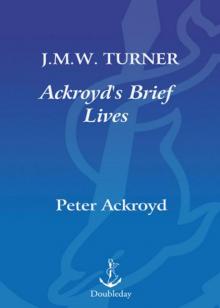 J. M. W. Turner
J. M. W. Turner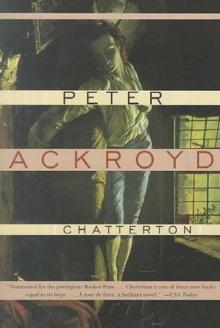 Chatterton
Chatterton The Canterbury Tales – A Retelling
The Canterbury Tales – A Retelling Alfred Hitchcock
Alfred Hitchcock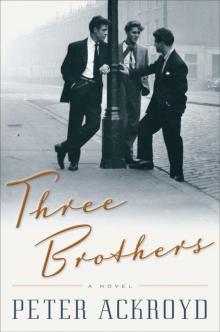 Three Brothers
Three Brothers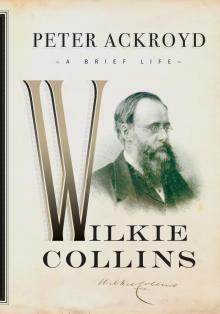 Wilkie Collins
Wilkie Collins Venice
Venice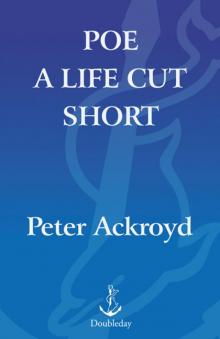 Poe
Poe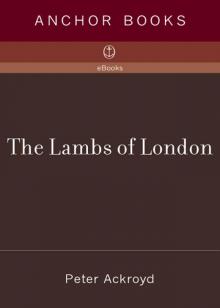 The Lambs of London
The Lambs of London London
London Queer City
Queer City Revolution, a History of England, Volume 4
Revolution, a History of England, Volume 4 Venice: Pure City
Venice: Pure City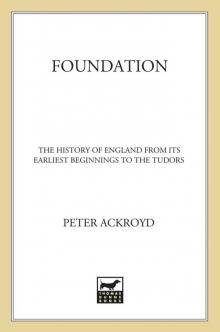 Foundation
Foundation Thames
Thames The Plato Papers
The Plato Papers The house of Doctor Dee
The house of Doctor Dee Rebellion: The History of England from James I to the Glorious Revolution
Rebellion: The History of England from James I to the Glorious Revolution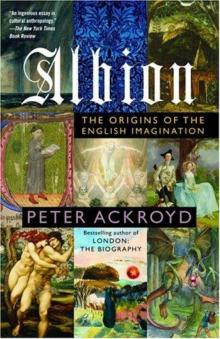 Albion: The Origins of the English Imagination
Albion: The Origins of the English Imagination The Fall of Troy
The Fall of Troy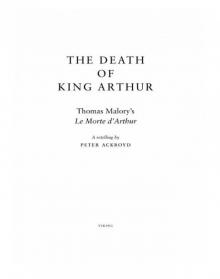 The Death of King Arthur
The Death of King Arthur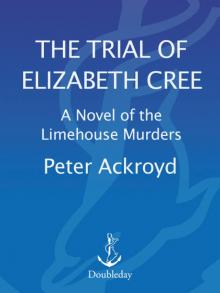 The Trial of Elizabeth Cree
The Trial of Elizabeth Cree London: The Biography
London: The Biography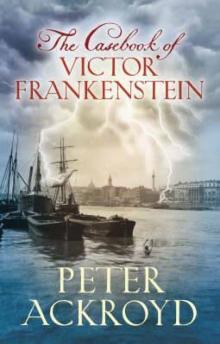 The Casebook of Victor Frankenstein
The Casebook of Victor Frankenstein Hawksmoor
Hawksmoor Charlie Chaplin
Charlie Chaplin London Under
London Under